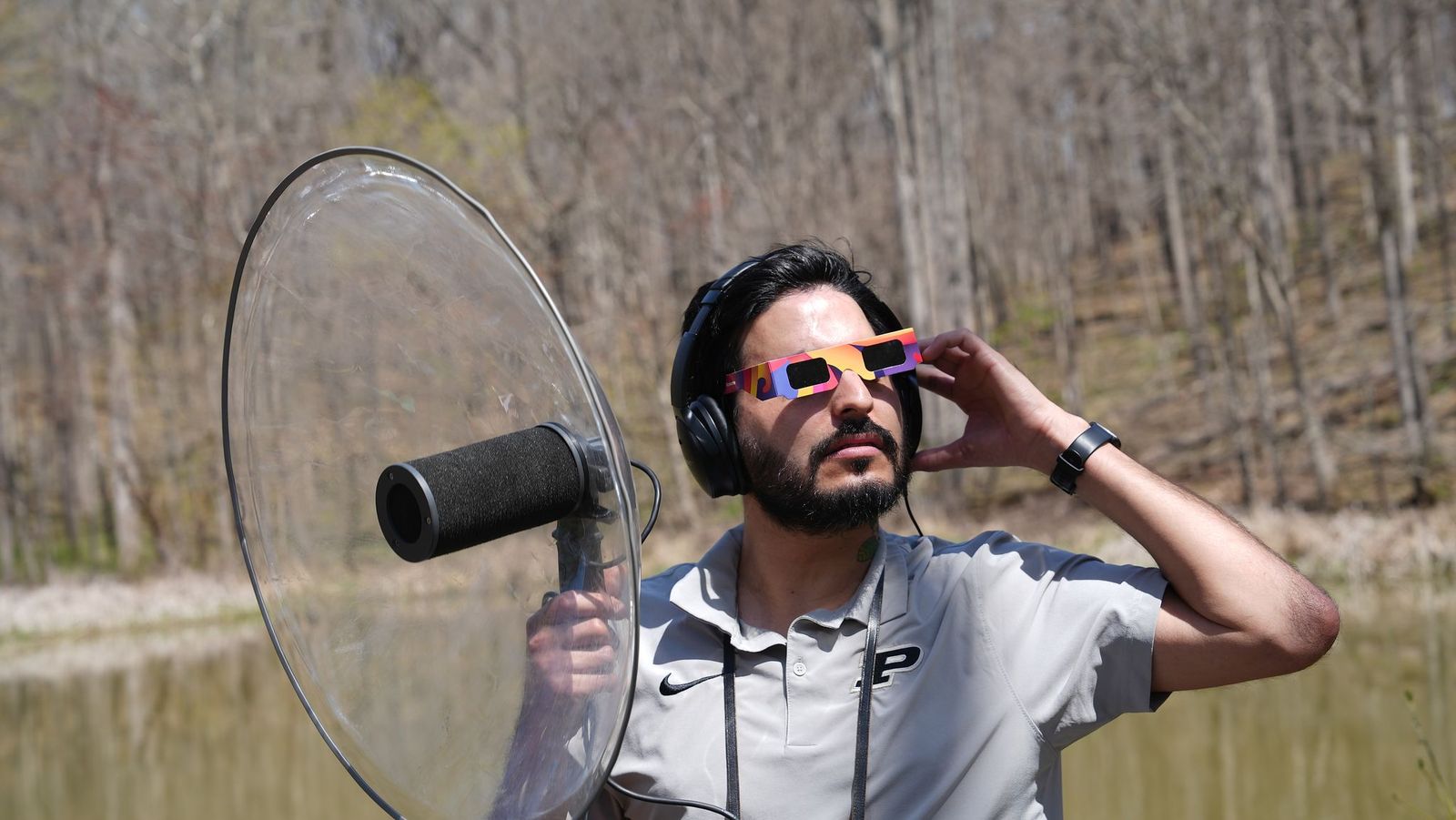
Key Takeaways:
Three hours before the 2024 total solar eclipse veiled parts of Indiana, the early afternoon cacophony of birds echoes through the forest. The rapid woody knock of a downy woodpecker, the longing call from a mourning dove, the cardinal’s signature whistle, and the lazy buzz of a bumble bee are all noted in the observation sheets of Bryan Pijanowski and his students. The team from Purdue University observes until the songs of more than 20 different bird species quiets down to only the quiet calls of robins and the tufted titmouse.
“Spring peepers!” exclaims Francisco Rivas Fuenzalida, a graduate student research assistant in Pijanowski’s lab at Purdue. The five researchers near the marsh pause and look outward into the vast space. “Yes!” says Pijanowski, celebrating the victory. The chorusing frogs croak their melodious crackle for a few seconds as the countdown to totality begins. The team continues its observation. They signal their excitement by giving each other a thumbs-up or pointing in the direction of a sound they’ve heard.

Like us, animals are sensitive to shifts in a landscape’s sound, light, temperature, and wind. For a short time, a total solar eclipse provides the perfect conditions to study how animals react to these changes. Using various recording devices, Pijanowksi and his team are here to gather the soundscapes of different ecosystems near Butlerville, Indiana, to see how animal circadian rhythms react to the changes in light caused by the eclipse. The team hypothesizes that nocturnal animals will start to chorus as soon as totality begins.
The effort — which is unfunded — is a “one-off” for the sheer joy of sating curiosity, part passion project. Pijanowski is an expert on soundscapes, and gets a lot of questions about how animals react to these types of events. “I have to have answers,” he says. “The next total eclipse … that moment is going to be after my time.”
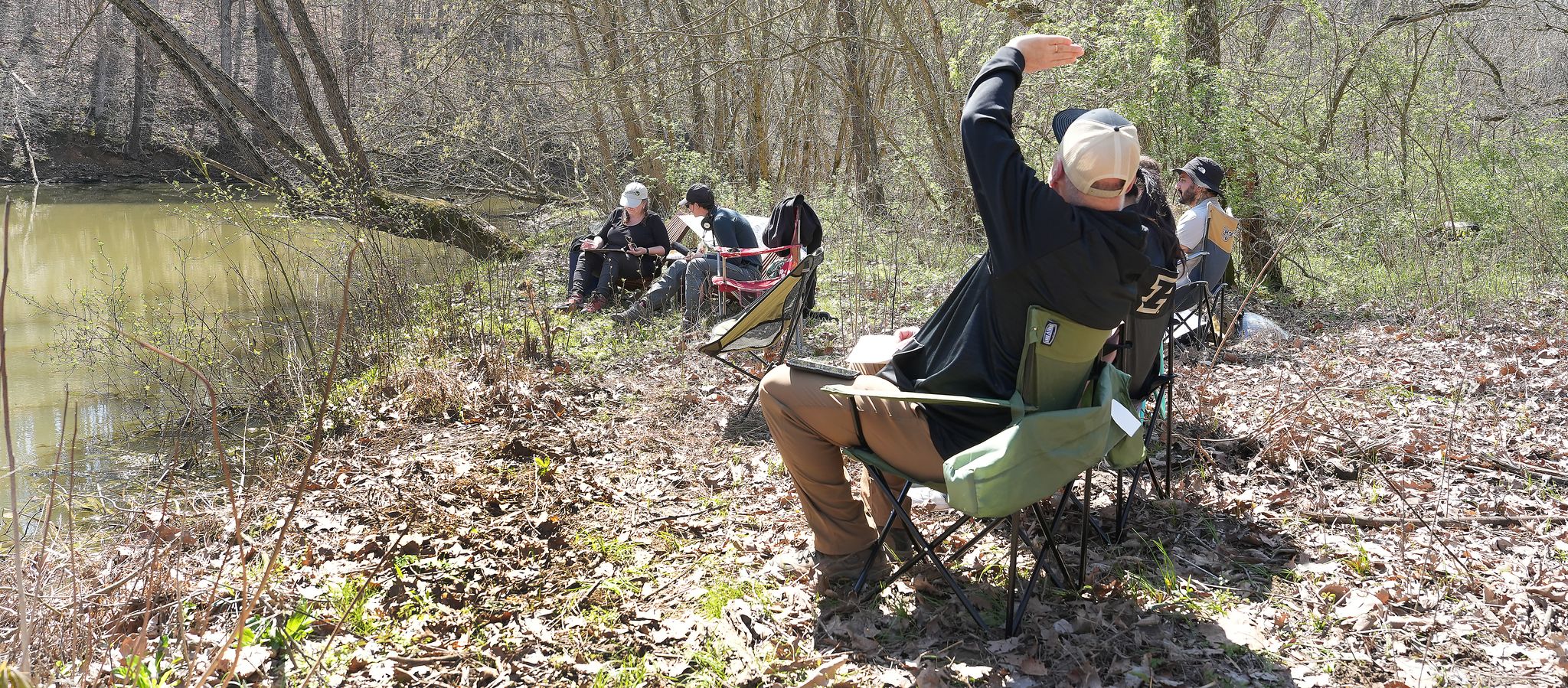
A past eclipse
This isn’t Pijanowski’s first solar eclipse experiment. In 2017, his team planned an experiment that focused on animal behavior and sound in zoos, county parks, and state forests across all the different phases of a total solar eclipse. “When I was in the middle of the total solar eclipse [in 2017], I was struck by the fact that there were so many similarities between what I was experiencing and what I would view during a sunset,” says Pijanowski.
Shades of orange and purple, which are unusual to see in the afternoon, and drops in temperature and wind speed, were observed by Pijanowski and his team seven years ago. They even captured activity from a common nighthawk, a predator that soars at dusk. But they also captured a lot of anthropogenic noise — noise created by humans. “People were so enthusiastic and excited that we missed some of the important data captures that we wanted,” says Kristen Bellisario, a soundscape ecologist at the John Martinson Honors College and Director of HIFI Lab. Bellisario is also a faculty fellow with the Center for Global Soundscapes. That study was published in Ecological Indicators.
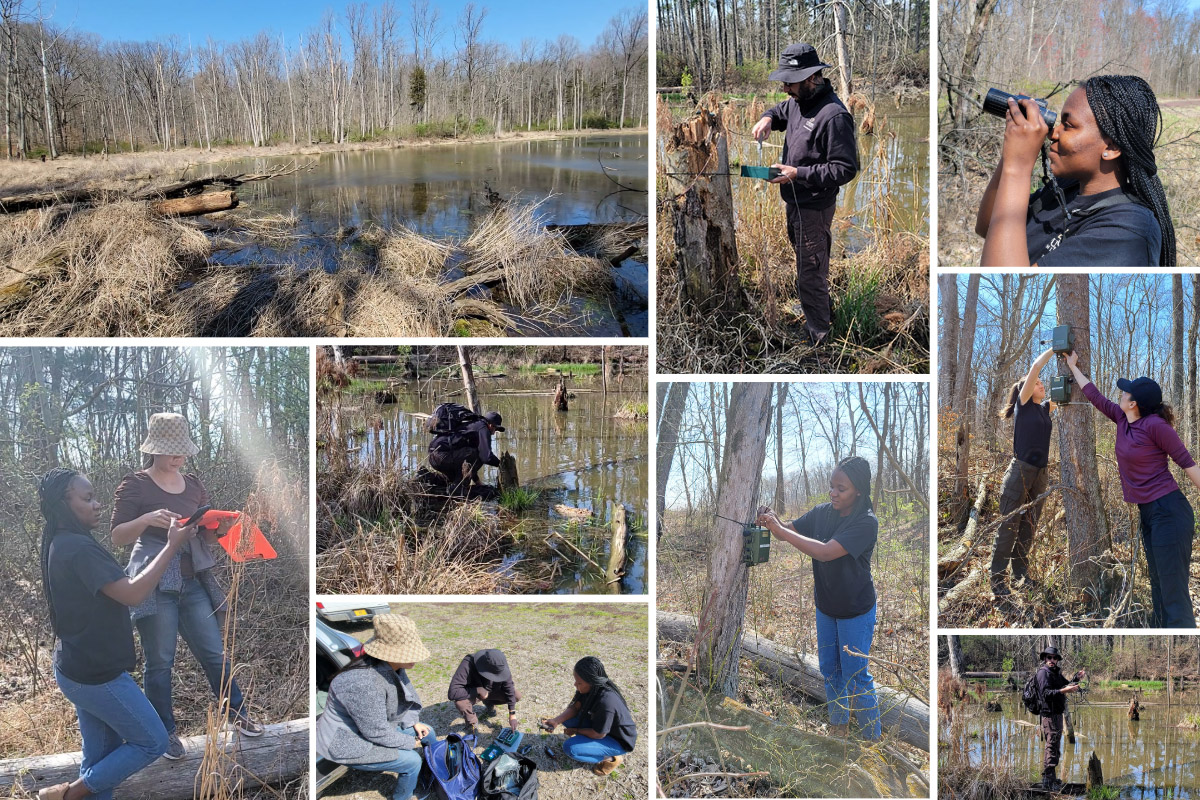
This year’s experiment will be different. Pijanowski chose a remote location where he and his students could immerse themselves in only the sounds of nature. A Purdue University-maintained site, about an hour and 30 minutes south of Indianapolis, seemed the perfect place. The land stretches over 2,500 acres and hosts a variety of landscapes. A week before the April 8 eclipse, Pijanowski and his graduate students deployed 16 sensors in 14 locations. The semi-remote forest transformed into an observatory of sound. Hydrophones were sunk into bodies of water, recorders were strapped to trees and placed near the river’s edge, and bat sensors were set up in a cemetery holding an old-growth woodland. These recorders will document the soundscape for a week before eclipse, then during the event, and for another week after the eclipse.
The ever-changing soundscape
On eclipse day, the team takes a winding route through the forest aboard four ATVs packed to the brim with cameras, recorders, and tools that noted wind speed, solar radiation, and temperature. They settle near a body of water with enough openings in the wood’s canopy to observe the Moon cloak the Sun. Here, they split up and set up their camping chairs, taking caution not to step on the thorny vines nipping at their legs. Then the scientists start their listening cycles.
About two hours before totality, Pijanowski calls for a quick reflection and an opportunity for the team to call out species they’ve noted. “The soundscape is dominated by four species of birds,” says Pijanowski. Since 1 P.M. local time, the scientists have not heard the calls of new species of birds, and the early-morning heat is fading into a cool breeze. The spring peepers sing again, but only for a few seconds at a time before quieting down.
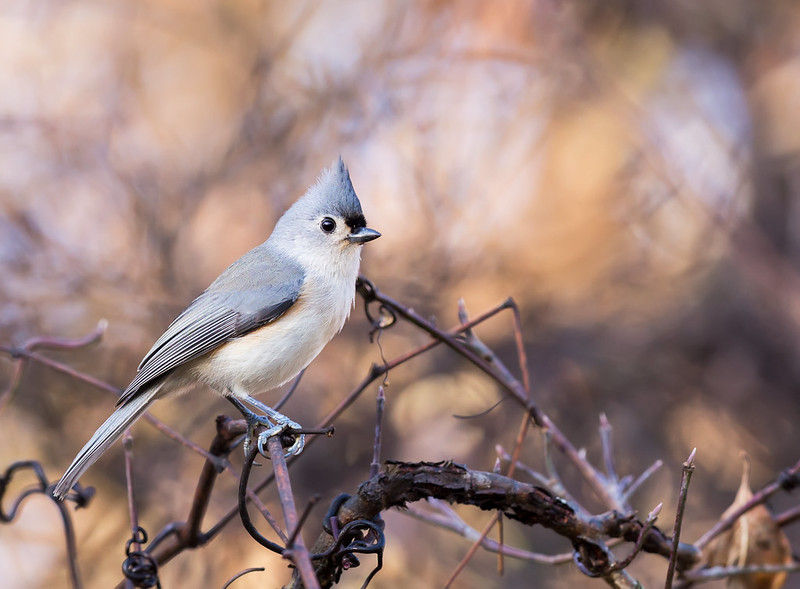
Thirty minutes before totality, the birds have stopped calling. They seem more curious. A gnatcatcher, chickadee, and tufted titmouse stand nearby on the branches overlooking the researchers. “They’re coming in and looking at us. So, I’m interpreting that as they sense something’s going on,” Pijanowski says, though it’s only a hypothesis. A train’s horn in the distance cuts through the forest’s orchestra. A few minutes pass, and the spring peepers chorus for a few seconds again. More minutes pass, and the few lone calls of crows and cardinals cut the silence. As totality inches closer, the changes in the marsh’s sound are apparent.
Unexpected sound
Ten minutes before totality, Pijanowski raises his index finger in the air, commanding attention to the trill of the spring peepers. The early-afternoon sounds have transformed into a dusk chorus of fish splashing, seconds of chorusing frogs, a few lone calls of birds, and also silence. At this point, the drop in temperature is more noticeable. Then, a plane pierces the silence. Its rumble is all we can hear.
Three minutes before totality, the plane is gone and the team is on their feet, eclipse glasses in hand or covering their eyes. An owl’s call comes from inside the forest just before totality hits, and Pijanowski whispers the discovery to the team. The Moon then slides in front of the Sun, and the forest landscape changes from a dusk of color to shadows of indigo. “Okay, we are at 100 percent [totality]”, Pijanowksi says. Then, as if on cue, the spring peepers fill the soundscape.
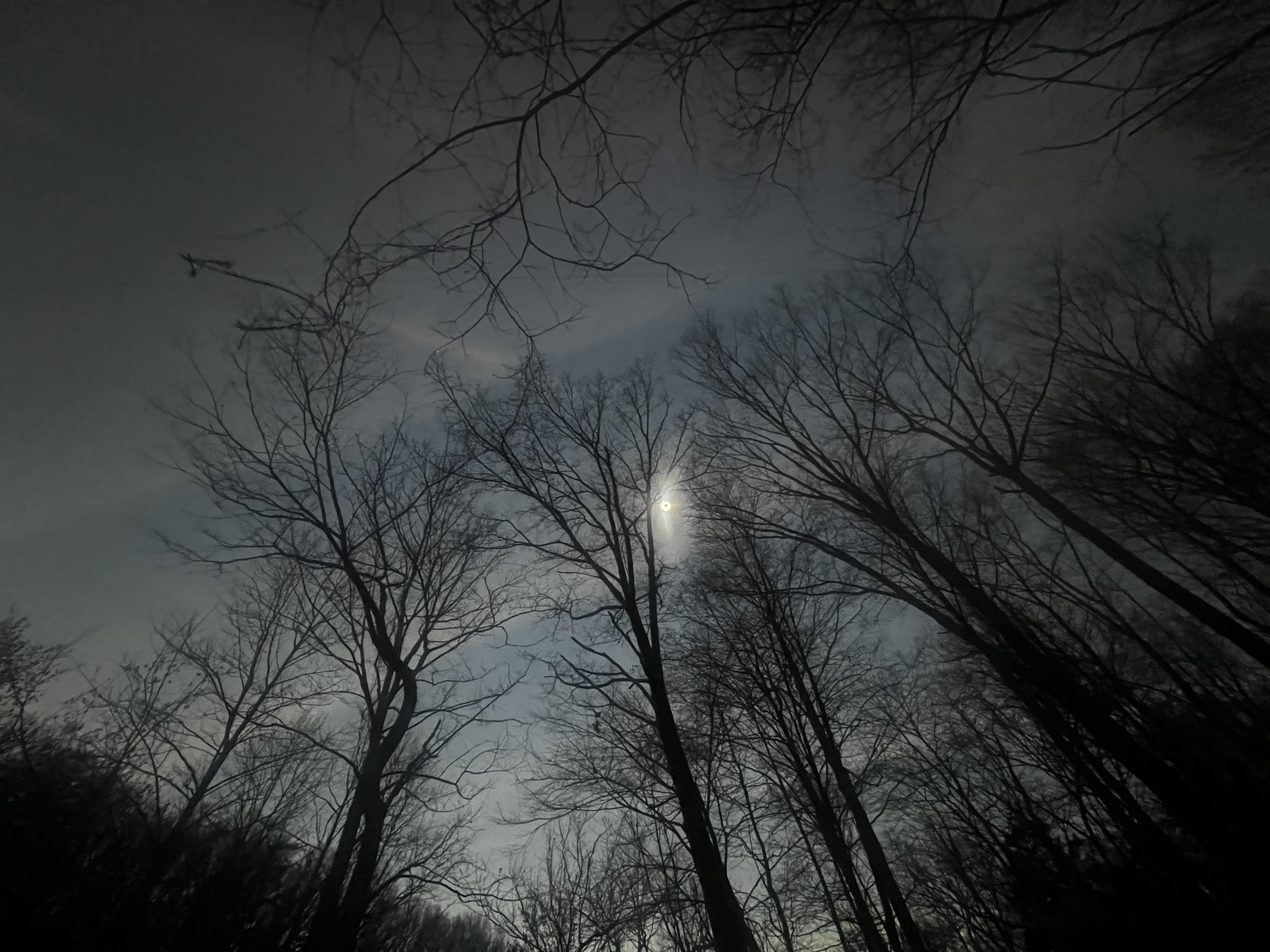
Against the backdrop of a glowing black disk in the sky, the team looks around and smiles at each other in awe. The chorus continues for nearly two minutes before a distant boom echoes through the forest, adding the sound of fireworks to the frogs’ chorus. Still, the frogs sing on. The team looks at each other, brushes it off, and observes the visible planets in the sky. They appear briefly alongside some bright stars before disappearing again as the Moon moves away from the Sun. The landscape transforms again into a world filled with orange color. “That was amazing, except for that,” Fuenzalida says, as he gestures toward the sound of the fireworks.
Human noise
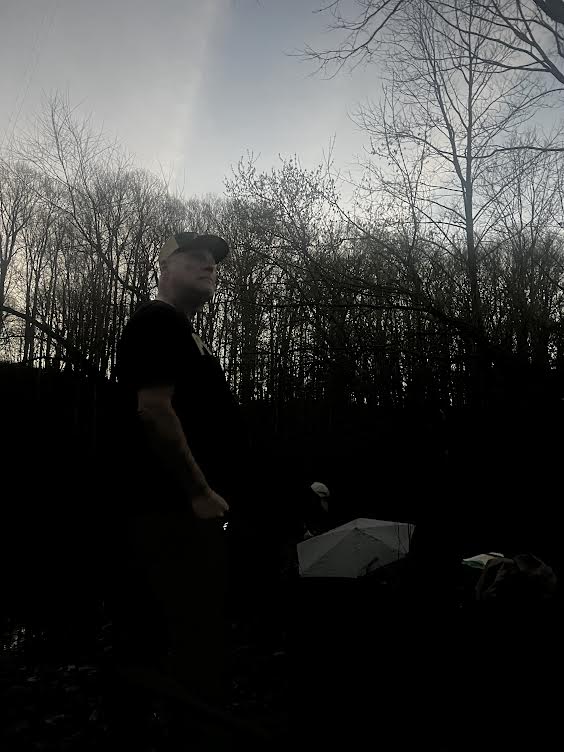
Despite trying to escape into a soundscape filled with the sounds of nature, the team simply couldn’t avoid anthropogenic noise. It has become a part of the natural soundscape. Pijanowski himself travels to the farthest regions on Earth to get away from human noise completely, at times hiking long distances, taking boats, jumping on snowmobiles, and even hitching rides on a helicopter to find the world’s most pristine sounds with no human encroachment. For the most pristine grassland soundscapes, for instance, he must travel far from the few remaining prairies of the Midwest to the Eastern Steppes of Mongolia.
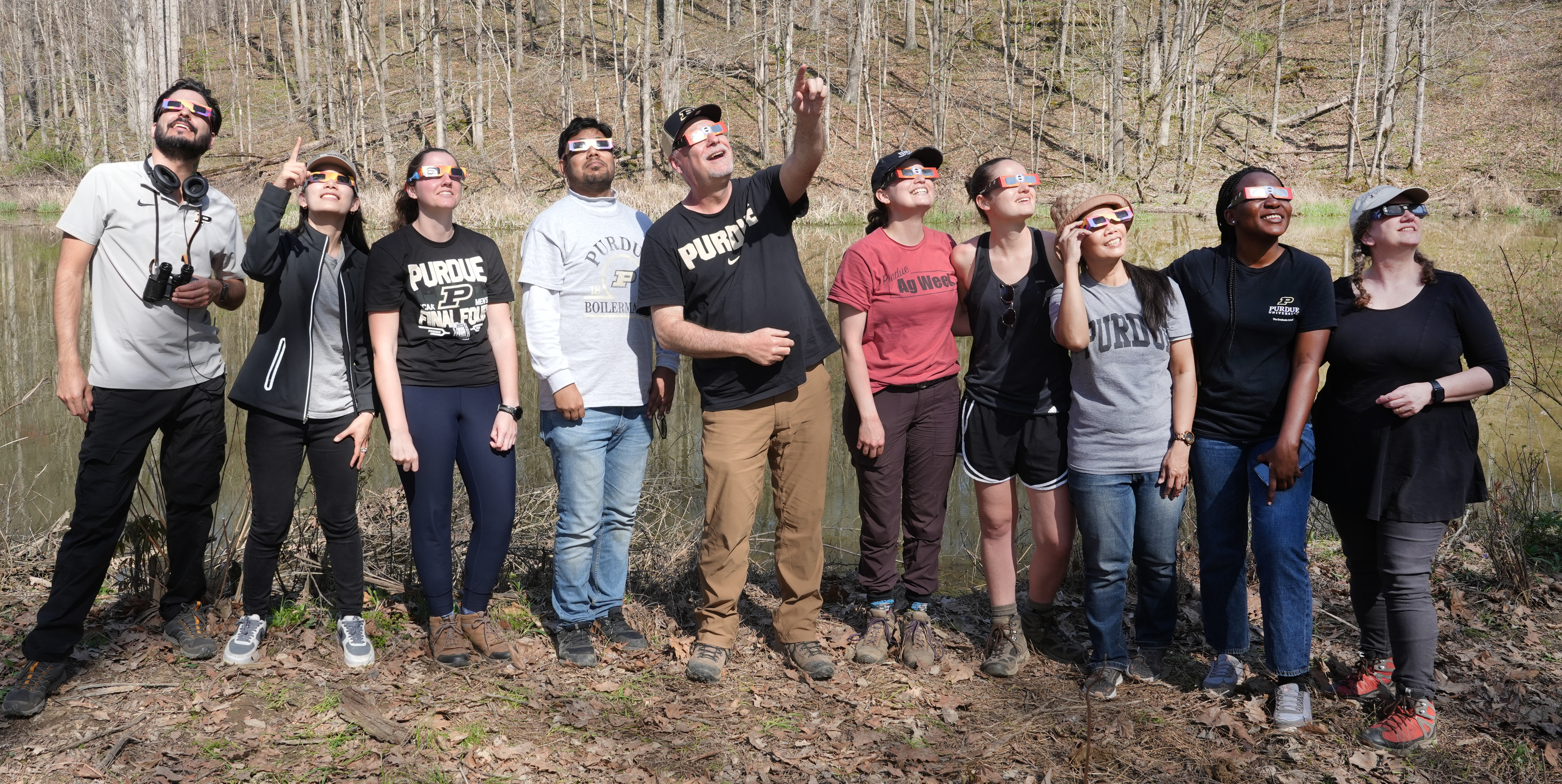
The recorders in the forest will continue to gather the soundscape for another week. The researchers head back to the ATVs to celebrate their success with sugar cookies. They reflect on the number of singing frogs and how quickly the birds quieted. And, of course, the fireworks. “I was very surprised that we would have human interruption here. We thought we had sufficiently found an isolated research area,” says Ballisario.
Fortunately, it does not seem their data will be affected by the added noise. Pijanowski’s team will analyze the recordings using AI to better understand how the eclipse changed the soundscape of southern Indiana at this moment in time. The results might be different during the next eclipse across the U.S., which won’t be for two decades.
Until then, go out and listen.









